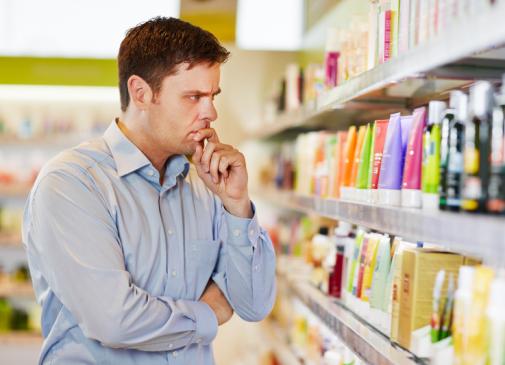An impulse purchase or impulse buying is an unplanned decision to buy a product or service, made just before a purchase. As a source of extra revenue, such spontaneous shopping is very desirable for any retailer. Profit generated in this category is worth fighting for. Impulse items are high-margin products which usually do not take up much space - a real godsend for any shopkeeper dreaming of a large profit generated from a relatively small retail surface.
An impulse purchase or impulse buying is an unplanned decision to buy a product or service, made just before a purchase. As a source of extra revenue, such spontaneous shopping is very desirable for any retailer. Profit generated in this category is worth fighting for. Impulse items are high-margin products which usually do not take up much space - a real godsend for any shopkeeper dreaming of a large profit generated from a relatively small retail surface.
Impulse Purchasing More Often In-Store
While online retail is expected to significantly outgrow overall retail sales, consumers appear to still be more comfortable spending larger amounts in-store than online. When it comes to impulse buys, a whopping 77% said they at least sometimes indulge in this behavior in-store, compared to half who do so online. That finding is supported by survey results from Wanderful Media, which indicated that more mobile-toting shoppers had recently made an impulse purchase in a store than had done so online (74% vs. 65%). According to the survey, digital natives (aged 18-34) are 18% more likely than the average respondent to report at least sometimes making an impulse purchase online (59% vs. 50%), while the 55+ group is 28% less likely (36% vs. 50%) than the average to do so.
Defining Best Practices
Impulse items are a varied product category. Apart from most popular cigarettes and sweets, other purchases made on impulse include: OCT medications, condoms, batteries, energy drinks in small containers, ice-cream and magazines. How to optimize their sales? Here's a bunch of tips based on research:
· Merchandise front-end checkout displays to reflect shopper buying behavior. Retailers should select items with high penetration (appeal to large numbers of shoppers) that are purchased frequently and that are commonly bought on impulse.
· Focus at the front-end checkout should be on so-called Power Categories that represent almost 80 percent of front-end sales and profits: confectionery, magazines and beverages.
· Maximize magazine presence at the front-end on end-caps as well as in the lane to enable consumer buying opportunities. Shoppers need to browse magazines.
· Make beverage coolers easily available to shoppers. Carry an assortment of beverages in each cooler that includes water as well as carbonated beverages.
· Be sure to merchandise self-scan checkout lanes. Consumers do not generally shop the regular checkout lanes and then proceed to self-scan aisles.
Mobiles Projected to Kill Impulse Buying at Checkout
Customers may be more prone to impulse buying in traditional stores rather than online, yet the sales of magazines, gum and other items typically stocked near grocery checkout counters have recently fallen sharply. The possible culprit: smartphones occupying shoppers' attention during wait times. The stores are already seeking alternatives to impulse buying at the checkout counter. For instance, Coke is adding single-serve drink coolers away from the front of the store. Moreover, many believe e-coupons sent to mobile phones in aisles and other digital approaches will only expand impulse opportunities at checkout and across the store. "By using location and behavior-based cues, savvy brands can reach consumers when and where it matters most," wrote Bonin Bough, VP of global media and consumer engagement at Mondelez International, in a recent article on Harvard Business Review's blog. "This could take the form of a mobile-based deal on gum mapped to a consumer's daily commute (a time when people are most likely to be chewing gum), or delivering a coupon for chocolate to a consumer's phone while they're in a long checkout line, engrossed in their phone instead of looking up at product displays."
Sources:
http://www.frontendfocus.com
http://www.poradnikhandlowca.com.pl;
http://www.marketingcharts.com;
http:/www.retailcustomerexperience.com










